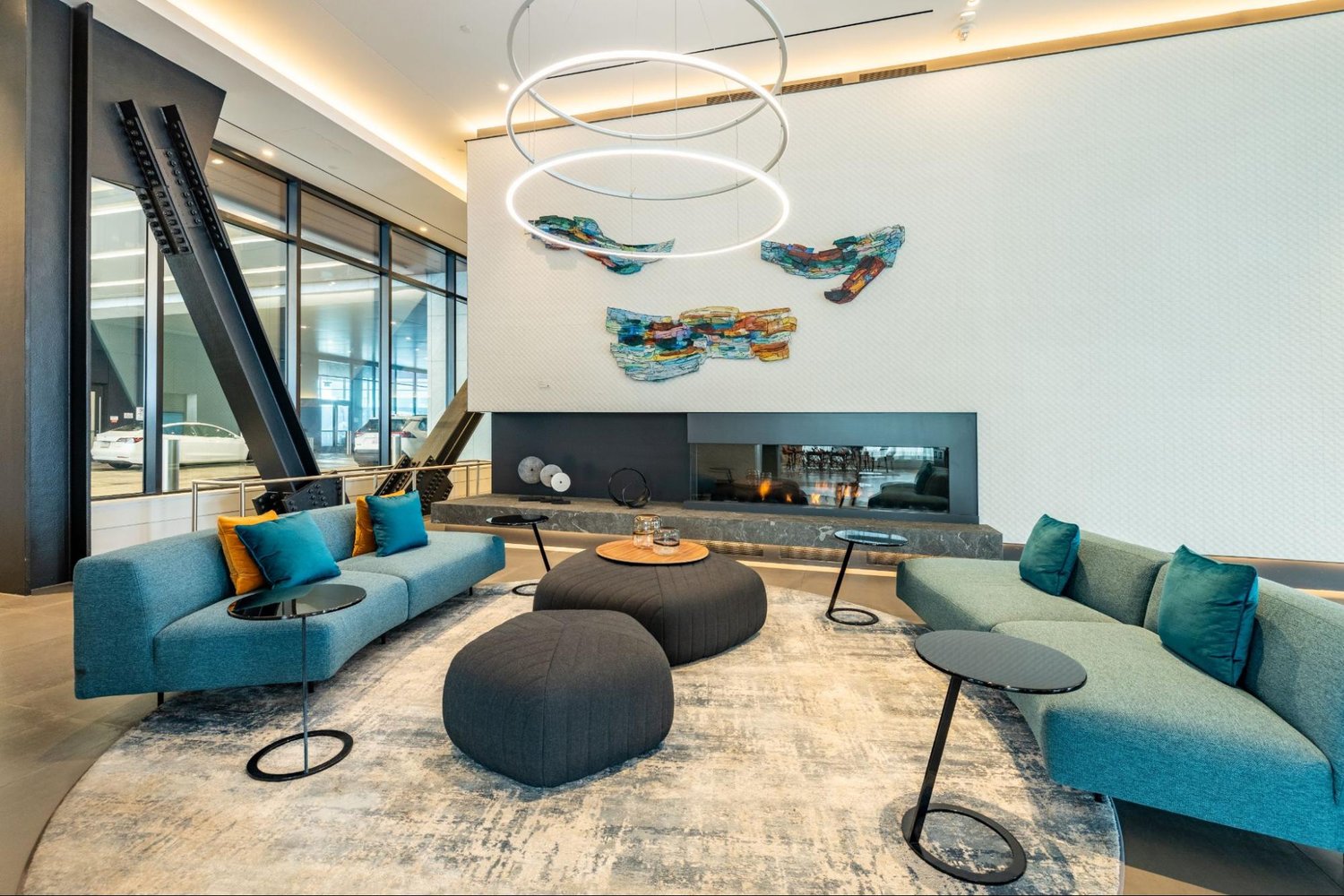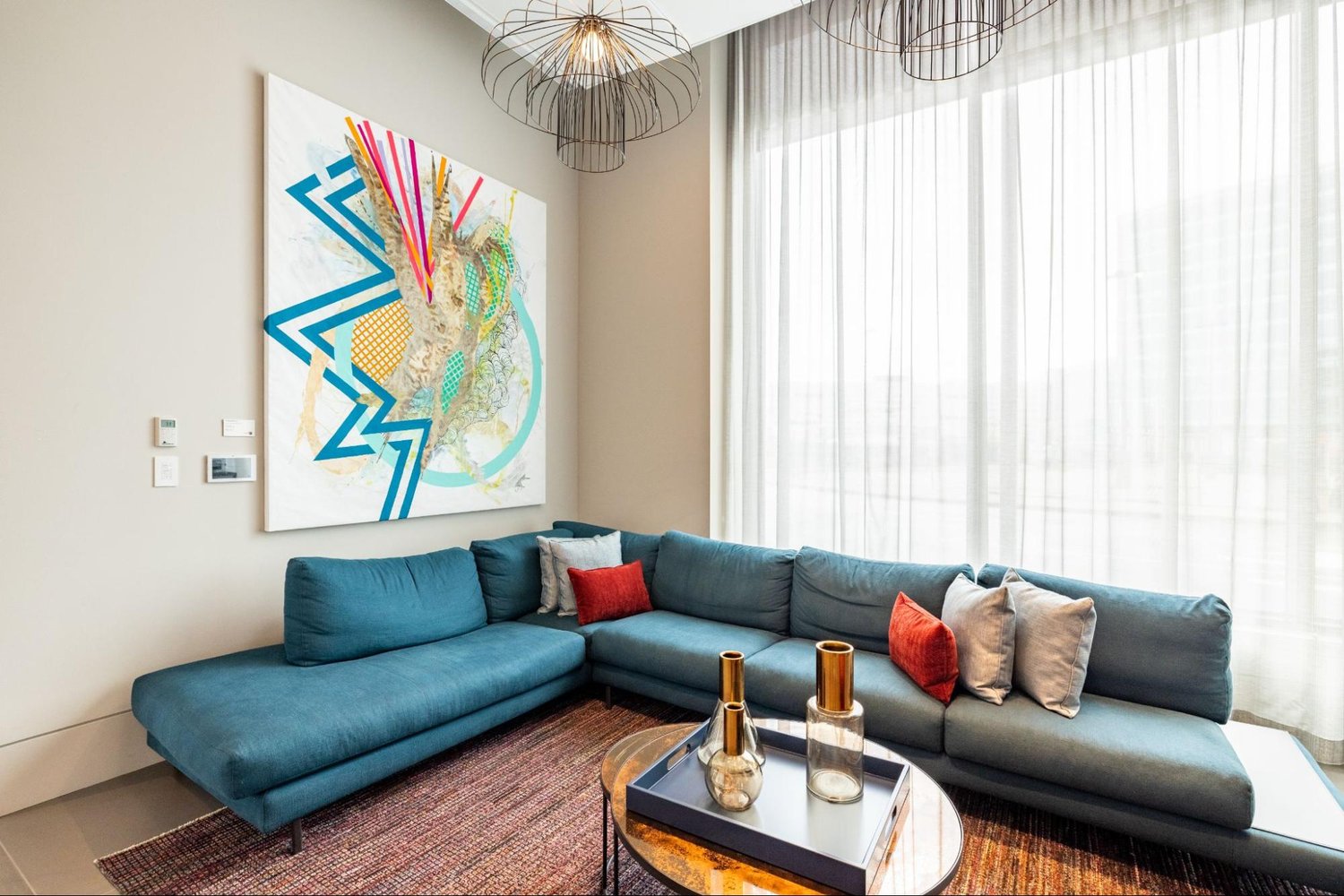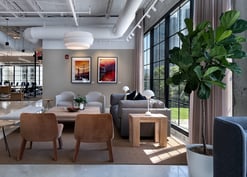Tenant expectations in commercial real estate are continually developing and changing. Currently, there is a real desire for developments to be designed with community in mind. In order to stay competitive in the CRE market, it is crucial for developments to positively impact the people who occupy the space and the surrounding community. This is defined as improving the “social value” of a space and includes monitoring themes such as inclusivity, accessibility, and tenant well-being.
Currently, there is a disconnect between the desire to improve social value and the actual steps being taken to do so. This is due, in part, to the difficulty of measuring the success of these softer metrics. This article will illustrate how, through the concept of human-centered design, art can reflect the values of a community and be used as a tool to measurably improve tenant retention, satisfaction, well-being, and ultimately revenue growth.
What is Human-Centered Design?
According to McKinsey, human-centered design is an innovative approach to planning and design that takes into account the desire for health and happiness. Through the lens of commercial real estate (CRE), this design philosophy places the needs of the tenant and the community at the forefront of the management process which can improve tenant engagement, experience, and, in turn, their well-being.
How Human-Centered Design Can Improve Social Value
Understanding how people react to their physical environment is crucial for providing better social value to the community that is being served. In CRE, a practical way to start assessing this behavior is by taking a closer look at what keeps people engaged and happy in a space.
However, these “social targets,” as we’ll call them, such as inclusivity, accessibility, and well-being, are difficult to quantify and thus are often forgotten. A recent JLL survey revealed that only about 42% of CRE leaders actually keep track of the usual statistics, such as tenant retention and revenue. Moreover, just 8% of CRE groups are effectively achieving the effective implementation of these social goals.
To better report on these goals, developers can use human-centered design thinking. Catering to tenants’ needs through thoughtful elements like accessibility, spatial flow, uplifting decor, and amenities clearly showcases a developer’s foresight and compassion toward tenants. As a result, contented tenants are more likely to stay, reflecting the cyclical positive impact of these considerations in a statistic (tenant retention) that is easy to measure.
The Value of Art in Human-Centered Design
But how can human-centered design be implemented in a practical way? To answer this question we need to consider the role that art plays within human-centered design that fulfills a developer’s social goals. Art has the capacity to seamlessly incorporate local and cultural themes into CRE settings, serving as a reflection of the community and its diverse inhabitants, thereby reinforcing a sense of tenant identity.
In fact, a recent JLL survey found that an impressive 91% of respondents believe that their real estate serves as a platform to uphold their social values. Additionally, in a collaborative survey by the Business Committee for the Arts, Inc. (BCA) and the International Association for Professional Art Advisors (IAPAA), 73% of respondents agree that art possesses the power to foster tenant and community relationships, directly contributing to increased satisfaction within the environment. By carefully selecting art and design elements that resonate with a diverse range of people, we not only enhance aesthetics but also promote inclusivity and engagement within the environment.
Art plays a vital role for CRE in this context, directly impacting the day-to-day lives and surroundings of its occupants. The same JLL survey corroborates this: a staggering 93% of their respondents agree that a thoughtfully enhanced environment, created by developers, can indeed cultivate a positive social atmosphere for the people who inhabit these spaces. Thus, the infusion of art into human-centered design aligns with social value goals and provides an avenue for mutual benefit to tenants and developers alike. As a result, the aesthetic components of a space serve multiple purposes: increased tenant retention, which can lead to overall revenue growth for developers and an improved sense of community and well-being for their tenants.
Our Art Advisory Services
TurningArt understands the key ingredients in cultivating a happy and connected community, especially in CRE properties. Our Art Advisors curate collections designed to contribute to your property's ESG goals and its unique needs.
We offer an extensive selection of contemporary artwork for your commercial real estate spaces that can either be purchased or rented on a rotating basis. We're thrilled to provide a valuable service for CRE developers that fosters connection and tenant satisfaction.
Connect with an Art Advisor to schedule a complimentary consultation or request a customized quote.


.jpg?width=332&height=177&name=_MG_0840%20copy%20(2).jpg)

.jpg?width=332&height=177&name=dtBv_067_DSC_2139_DaNil%20(2).jpg)



